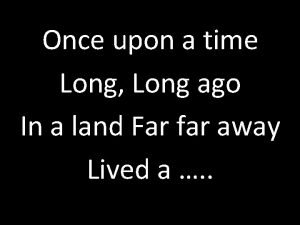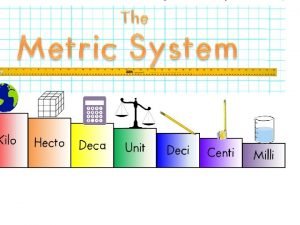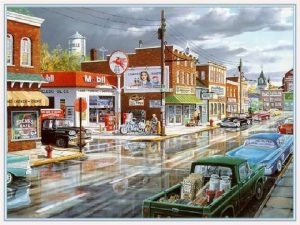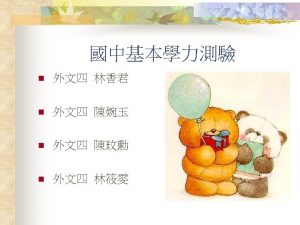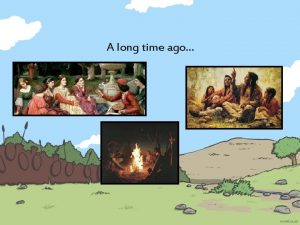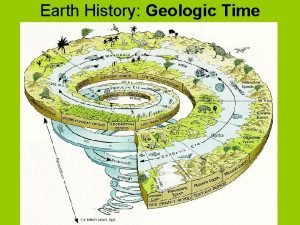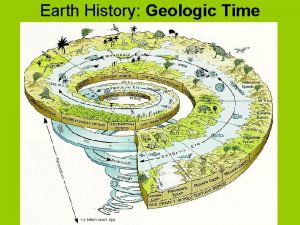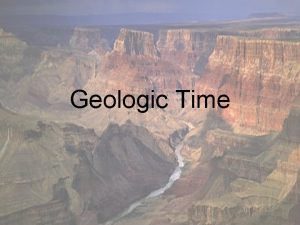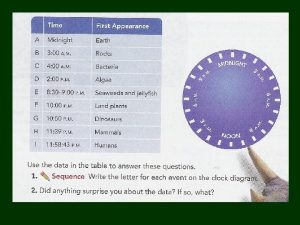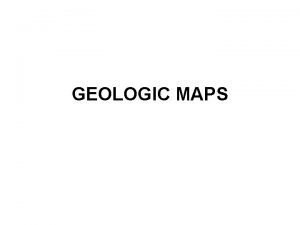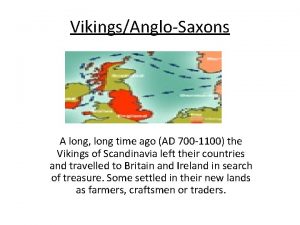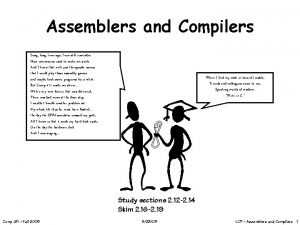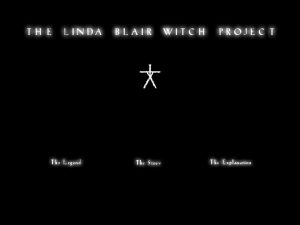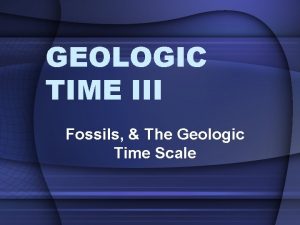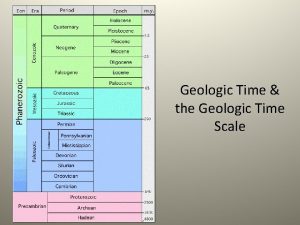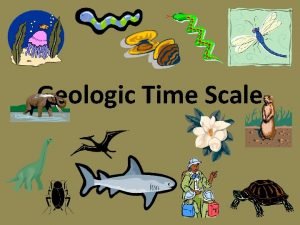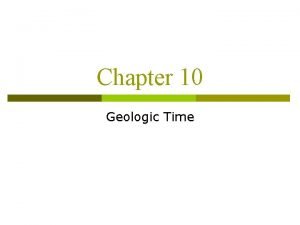Geologic Time Geologic Time How long ago did

























- Slides: 25

Geologic Time

Geologic Time How long ago did the dinosaurs live? How old is the grand canyon? How old is the Earth?

Fossils • Definition – The preserved remains or traces of living things.

Fossils • Fossils are mostly found in sedimentary rock • Why? • Can they be found in other types of rock?

Five Kinds of Fossils • Petrified Fossil • Mold and Cast • Trace Fossil • Preserved Remains • Carbon Films

Petrified Fossils in which minerals replace all or part of an organism

4 Stages of Petrified Fossil Formation 1. Death The organism dies

2. Deposition Organism is covered by sediments.

3. Permineralization The chemicals in the organism’s body parts are slowly changed to minerals such as calcite, iron or silica.

4. Erosion Weathering and Erosion expose the fossil at the Earth’s surface.

Molds and Casts Mold- A hollow area in sediment in the shape of an organism. Casts- A copy of the organism made from the mold filling with minerals.

Carbon Film A type of fossil consisting of an extremely thin coating of carbon on rock.

Trace Fossil A type of fossil that provides evidence of the activities of ancient organisms – Ex. Foot prints, worm burrows, coprolites

Preserved Remains of ancient organisms that have not decayed. Ex. Frozen mammoths, Saber tooth cats stuck in tar pits, Insects in Amber

What does the fossil record tell us? • Organisms change over time • Organisms go extinct • The Earth’s environment changes over time – Changing climate – Changing landscape

Relative Age The age of a rock compared to rocks around it

Law of Superposition The geologic principle that states in undisturbed horizontal layers of sedimentary rock, each layer is older than the layer above it and younger than the layer below it.


Clues from igneous rocks • Extrusions- rock layers below extrusions are always older. • Intrusions- Intrusions are always younger than the rock around and beneath it.


Clues From Faults A fault is always younger than the rock it cuts through.


Gaps In the Geologic Record Unconformities are gaps in the geologic record due to erosion

Index Fossils • Must be widely distributed. • Must have existed for a short period of geologic time. • They are used to get the absolute age of the rock they are in.

Absolute Age • Absolute age is the number of years since the rock was formed. • Absolute age is found using radioactive dating. • It is found by using the half life of radioactive elements in the rock. • Can only be used for igneous rocks.
 Once upon a time a long long time ago
Once upon a time a long long time ago Once upon a long time ago
Once upon a long time ago Once upon a time there lived an old man
Once upon a time there lived an old man Compare geologic time with the geologic column.
Compare geologic time with the geologic column. Long time ago people
Long time ago people Complete the story once upon a time lived a king who
Complete the story once upon a time lived a king who Greek
Greek How long ago did
How long ago did Since long time ago
Since long time ago A long time ago in america
A long time ago in america Once upon a time long ago and far away
Once upon a time long ago and far away A long time ago there
A long time ago there A long time ago there
A long time ago there My dear do you know how a long time ago
My dear do you know how a long time ago Once upon a time long ago and far away
Once upon a time long ago and far away A long time ago there
A long time ago there Tall+short h
Tall+short h How many people died from the great wall of china
How many people died from the great wall of china Akadians long ago
Akadians long ago Alliteration in dover beach
Alliteration in dover beach There lived a certain man in russia
There lived a certain man in russia Long ago and today
Long ago and today Long ago and today
Long ago and today Jungles long ago
Jungles long ago How long ago was the renaissance
How long ago was the renaissance How long ago was 322 bc
How long ago was 322 bc
